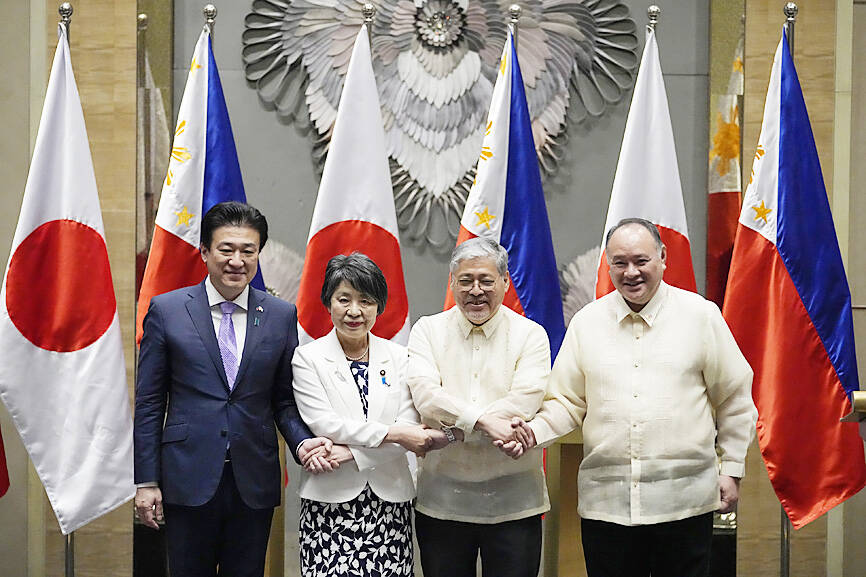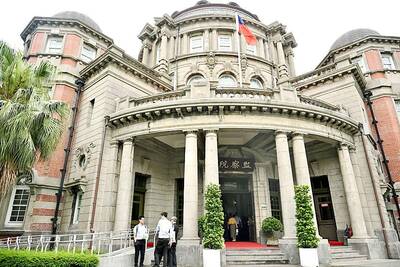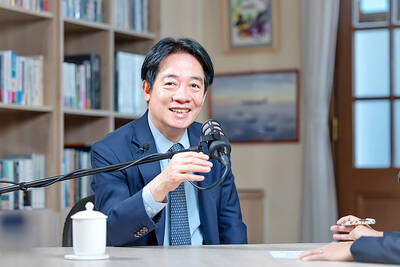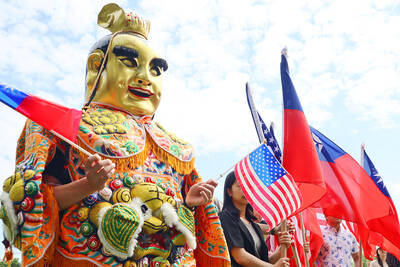Japan and the Philippines yesterday signed a key defense pact, allowing the deployment of Japanese forces for joint drills in the Southeast Asian nation that came under brutal Japanese occupation in World War II, but is now building an alliance with Tokyo as both face an increasingly assertive China.
The Reciprocal Access Agreement, which similarly allows Filipino forces to enter Japan for joint combat training, was signed by Philippine Secretary of Defense Gilberto Teodoro and Japanese Minister of Foreign Affairs Yoko Kamikawa in a Manila ceremony witnessed by Philippine President Ferdinand Marcos Jr.
It would take effect after ratification by the countries’ legislatures, Philippine and Japanese officials said.

Photo: AP
Kamikawa called the signing of the defense agreement “a groundbreaking achievement” that should further boost defense cooperation between the countries.
The Japanese and Philippine officials “expressed serious concern over the dangerous and escalatory actions by China” in Second Thomas Shoal (Renai Shoal, 仁愛暗沙), the scene of a recent confrontation between Chinese and Philippine forces in the South China Sea.
They underscored in a joint statement the need “for the international community to speak out on the importance of maintaining and strengthening the free and open international order based on the rule of law” in the disputed waters.
There was no immediate comment by Chinese officials.
The defense pact with the Philippines, which includes live-fire drills, is the first to be forged by Japan in Asia. Japan signed similar accords with Australia in 2022 and with Britain last year.
Under Japanese Prime Minister Fumio Kishida, the nation has taken steps to boost its security and defensive firepower, including a counterstrike capability that breaks from the country’s postwar principle of focusing only on self-defense. It is doubling defense spending in a five-year period to 2027 in a move to bolster its military power and make Japan the world’s third-biggest military spender after the US and China.
Many of Japan’s Asian neighbors, including the Philippines, came under Japanese aggression until its defeat in World War II, and Tokyo’s efforts to strengthen its military role and spending could be a sensitive issue. However, Japan and the Philippines have steadily deepened defense and security ties.
Kishida’s moves dovetail with Marcos’ effort to forge security alliances to bolster the Philippine military’s limited ability to defend its territorial interests in the South China Sea. The busy sea passage is a key global trade route which has been claimed virtually in its entirety by China, but also contested in part by Taiwan, the Philippines, Vietnam, Malaysia and Brunei.

Nvidia Corp yesterday unveiled its new high-speed interconnect technology, NVLink Fusion, with Taiwanese application-specific IC (ASIC) designers Alchip Technologies Ltd (世芯) and MediaTek Inc (聯發科) among the first to adopt the technology to help build semi-custom artificial intelligence (AI) infrastructure for hyperscalers. Nvidia has opened its technology to outside users, as hyperscalers and cloud service providers are building their own cost-effective AI chips, or accelerators, used in AI servers by leveraging ASIC firms’ designing capabilities to reduce their dependence on Nvidia. Previously, NVLink technology was only available for Nvidia’s own AI platform. “NVLink Fusion opens Nvidia’s AI platform and rich ecosystem for

WARNING: From Jan. 1 last year to the end of last month, 89 Taiwanese have gone missing or been detained in China, the MAC said, urging people to carefully consider travel to China Lax enforcement had made virtually moot regulations banning civil servants from making unauthorized visits to China, the Control Yuan said yesterday. Several agencies allowed personnel to travel to China after they submitted explanations for the trip written using artificial intelligence or provided no reason at all, the Control Yuan said in a statement, following an investigation headed by Control Yuan member Lin Wen-cheng (林文程). The probe identified 318 civil servants who traveled to China without permission in the past 10 years, but the true number could be close to 1,000, the Control Yuan said. The public employees investigated were not engaged in national

CAUSE AND EFFECT: China’s policies prompted the US to increase its presence in the Indo-Pacific, and Beijing should consider if this outcome is in its best interests, Lai said China has been escalating its military and political pressure on Taiwan for many years, but should reflect on this strategy and think about what is really in its best interest, President William Lai (賴清德) said. Lai made the remark in a YouTube interview with Mindi World News that was broadcast on Saturday, ahead of the first anniversary of his presidential inauguration tomorrow. The US has clearly stated that China is its biggest challenge and threat, with US President Donald Trump and US Secretary of Defense Pete Hegseth repeatedly saying that the US should increase its forces in the Indo-Pacific region

ALL TOGETHER: Only by including Taiwan can the WHA fully exemplify its commitment to ‘One World for Health,’ the representative offices of eight nations in Taiwan said The representative offices in Taiwan of eight nations yesterday issued a joint statement reiterating their support for Taiwan’s meaningful engagement with the WHO and for Taipei’s participation as an observer at the World Health Assembly (WHA). The joint statement came as Taiwan has not received an invitation to this year’s WHA, which started yesterday and runs until Tuesday next week. This year’s meeting of the decisionmaking body of the WHO in Geneva, Switzerland, would be the ninth consecutive year Taiwan has been excluded. The eight offices, which reaffirmed their support for Taiwan, are the British Office Taipei, the Australian Office Taipei, the